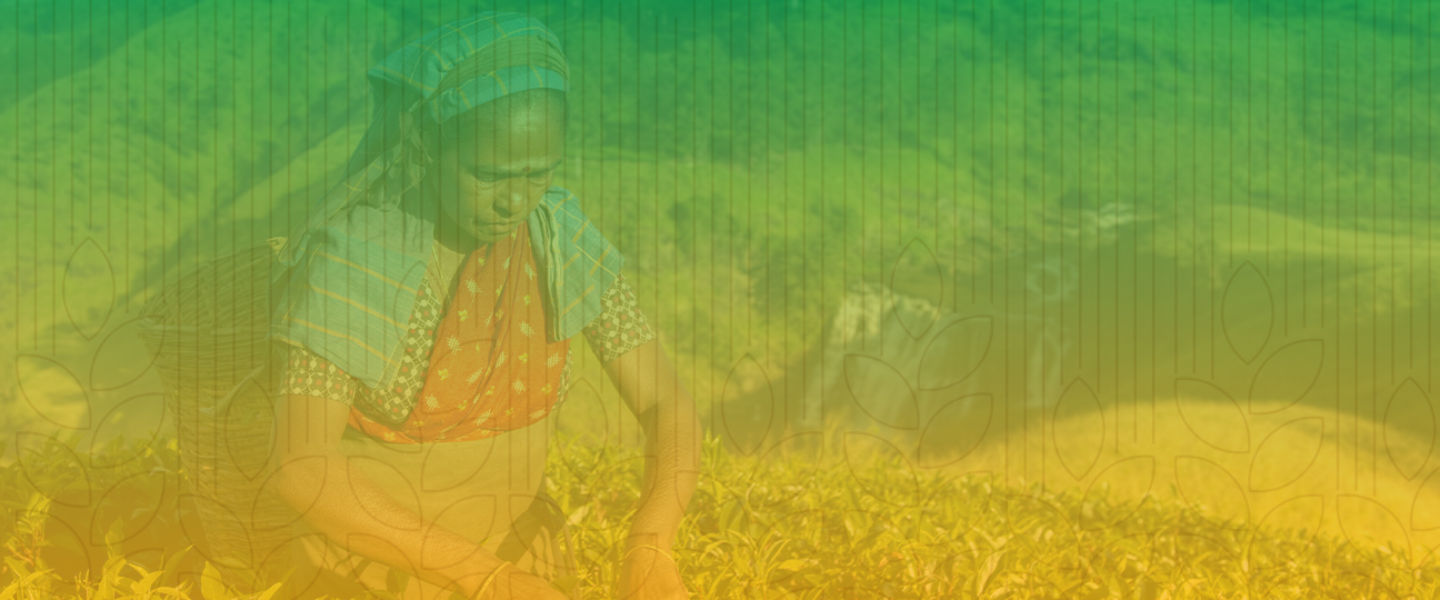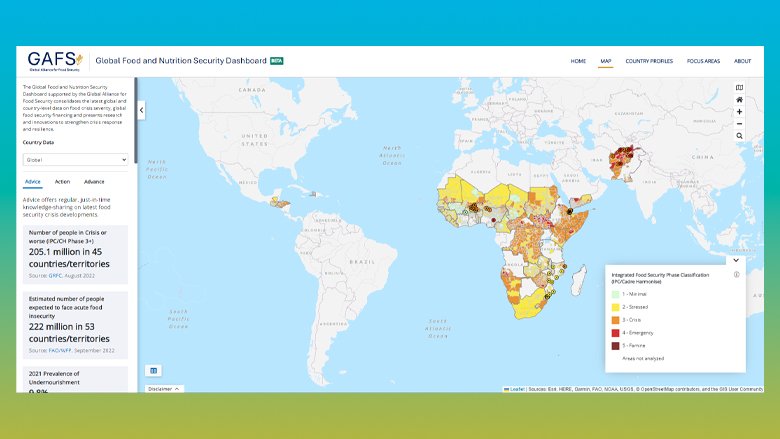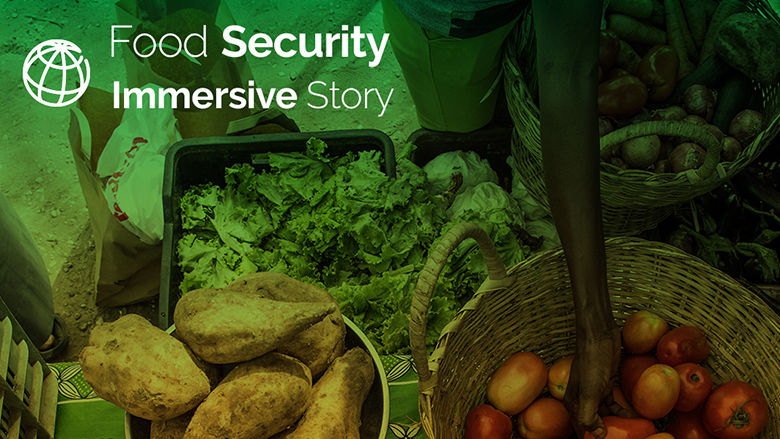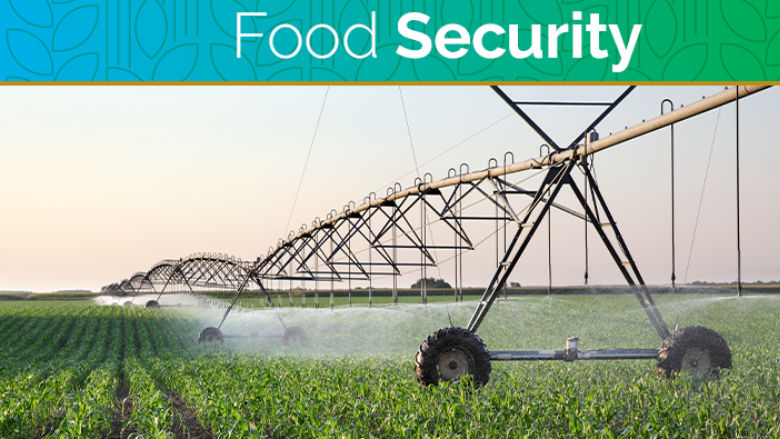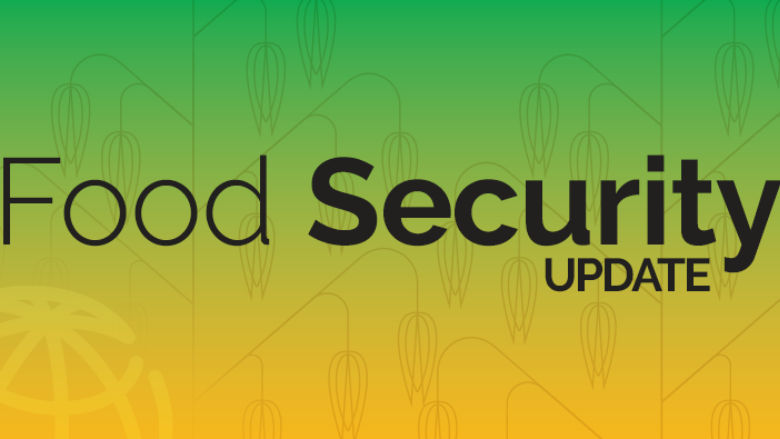Latest Food Security Data – November 3, 2025
Hurricane Melissa that hit Jamaica and Cuba and affected the Caribbean islands of Haiti and the Dominican Republic destroyed infrastructure, crops and livestock and disrupted essential services such as health and education. Several days of torrential rains, storm surges and catastrophic flooding have impacted the lives of more than 700,000 children across the Caribbean, according to UNICEF estimates. The Government of Haiti is estimating over 16,000 hectares of food crops destroyed or damaged and loss of livestock for nearly 4,000 farming households. Preliminary damage assessments from the hurricane are ongoing but impacts on food and nutrition security will likely be dire, especially for the region's most vulnerable populations.
Download the latest brief on rising food insecurity and World Bank responses
Domestic food price inflation remains moderately high. Information from June and September 2025 for which food price inflation data are available shows high inflation in many low- and middle-income countries, with inflation higher than 5% in 55.6% of low-income countries (2.8 percentage points lower than at the last update on September 17, 2025), 51.1% of lower-middle-income countries (5.4 percentage points higher), 55% of upper-middle-income countries (5.0 percentage points higher), and 20% of high-income countries (no change). In real terms, food price inflation exceeded overall inflation in 65% of the 161 countries where data is available.
The October 2025 Commodity Markets Outlook reported that commodity prices are expected to decline by about 7% this year. Since the last update, agricultural and export-price indices closed 6% and 11% higher, respectively, and the cereal price index closed at the same level. The AMIS Market Monitor, reports that global markets for major staples remain broadly well supplied, with favorable production conditions across most regions. The expected La Niña, together with an irregular change in sea surface temperatures in the Indian Ocean, will require close monitoring as these can shift rainfall patterns in key producing and import-dependent regions.
Also in October, the World Bank Group, together with the African Development Bank, the Inter-American Development Bank, and the International Fund for Agricultural Development, launched AgriConnect, an ambitious program to reshape agribusiness, create jobs in agrifood value chains and transform the livelihoods of millions of smallholder farmers globally.
The 2025 Child Nutrition Report highlighted an alarming rise in childhood overweight and obesity worldwide, driven by unhealthy food environments. In 2025, the prevalence of obesity among children and adolescents aged 5 to 19 overtook underweight children and adolescents for the first time, marking a significant shift in global malnutrition patterns. The number of overweight children and adolescents aged 5 to 19 has doubled since 2000, with low- and middle-income countries accounting for 81% of the global burden—up from 66% in 2000—leaving countries with a malnutrition double burden wherein overweight and obesity coexists with undernutrition.
How the World Bank addresses food insecurity
Our food and nutrition security portfolio now spans across 90 countries. It includes both short term interventions such as expanding social protection, also longer-term resilience such as boosting productivity and climate-smart agriculture. The Bank's intervention is expected to benefit 327 million people by 2030. Some examples include:
- In Honduras, the Rural Competitiveness Project series (COMRURAL II and III) aims to generate entrepreneurship and employment opportunities while promoting a climate-conscious, nutrition-smart strategy in agri-food value chains. To date, the program is benefiting around 6,287 rural small-scale producers (of which 33% are women, 15% youth, and 11% indigenous) of coffee, vegetables, dairy, honey, and other commodities through enhanced market connections and adoption of improved agricultural technologies and has created 6,678 new jobs.
- In Honduras, the Corredor Seco Food Security Project (PROSASUR) strives to enhance food security for impoverished and vulnerable rural households in the country’s Dry Corridor. This project has supported 12,202 extremely vulnerable families through nutrition-smart agricultural subprojects, food security plans, community nutrition plans, and nutrition and hygiene education. Within the beneficiary population, 70% of children under the age of five and their mothers now have a dietary diversity score of at least 4 (i.e., consume at least four food groups).
- The $2.75 billion Food Systems Resilience Program for Eastern and Southern Africa, helps countries in Eastern and Southern Africa increase the resilience of the region’s food systems and ability to tackle growing food insecurity. Now in phase three, the program will enhance inter-agency food crisis response also boost medium- and long-term efforts for resilient agricultural production, sustainable development of natural resources, expanded market access, and a greater focus on food systems resilience in policymaking.
- A $95 million credit from IDA for the Malawi Agriculture Commercialization Project (AGCOM) to increase commercialization of select agriculture value chain products and to provide immediate and effective response to an eligible crisis or emergency.
- The $200 million IDA grant for Madagascar to strengthen decentralized service delivery, upgrade water supply, restore and protect landscapes, and strengthen the resilience of food and livelihood systems in the drought-prone ‘Grand Sud’.
- A $60 million credit for the Integrated Community Development Project that works with refugees and host communities in four northern provinces of Burundi to improve food and nutrition security, build socio-economic infrastructure, and support micro-enterprise development through a participatory approach.
- The $175 million Sahel Irrigation Initiative Regional Support Project is helping build resilience and boost productivity of agricultural and pastoral activities in Burkina Faso, Chad, Mali, Mauritania, Niger, and Senegal. More than 130,000 farmers and members of pastoral communities are benefiting from small and medium-sized irrigation initiatives. The project is building a portfolio of bankable irrigation investment projects of around 68,000 ha, particularly in medium and large-scale irrigation in the Sahel region.
- Through the $50 million Emergency Food Security Response project, 329,000 smallholder farmers in Central Africa Republic have received seeds, farming tools and training in agricultural and post-harvest techniques to boost crop production and become more resilient to climate and conflict risks.
- The $15 million Guinea Bissau Emergency Food Security Project is helping increase agriculture production and access to food to vulnerable families. Over 72,000 farmers have received drought-resistant and high-yielding seeds, fertilizers, agricultural equipment; and livestock vaccines for the country-wide vaccination program. In addition, 8,000 vulnerable households have received cash transfer to purchase food and tackle food insecurity.
- The $60 million Accelerating the Impact of CGIAR Research for Africa (AICCRA) project has reached nearly 3 million African farmers (39% women) with critical climate smart agriculture tools and information services in partnership with the Consortium of International Agricultural Research Centers (CGIAR). These tools and services are helping farmers to increase production and build resilience in the face of climate crisis. In Mali, studies showed that farmers using recommendations from the AICCRA-supported RiceAdvice had on average 0.9 ton per hectare higher yield and US$320 per hectare higher income.
- The $766 million West Africa Food Systems Resilience Program is working to increase preparedness against food insecurity and improve the resilience of food systems in West Africa. The program is increasing digital advisory services for agriculture and food crisis prevention and management, boosting adaption capacity of agriculture system actors, and investing in regional food market integration and trade to increase food security. An additional $345 million is currently under preparation for Senegal, Sierra Leone and Togo.
- A $150 million grant for the second phase of the Yemen Food Security Response and Resilience Project, which will help address food insecurity, strengthen resilience and protect livelihoods.
- $50 million grant of additional financing for Tajikistan to mitigate food and nutrition insecurity impacts on households and enhance the overall resilience of the agriculture sector.
- A $125 million project in Jordan aims to strengthen the development the agriculture sector by enhancing its climate resilience, increasing competitiveness and inclusion, and ensuring medium- to long-term food security.
- A $300 million project in Bolivia that will contribute to increasing food security, market access and the adoption of climate-smart agricultural practices.
- A $315 million loan to support Chad, Ghana and Sierra Leone to increase their preparedness against food insecurity and to improve the resilience of their food systems.
- A $500 million Emergency Food Security and Resilience Support Project to bolster Egypt's efforts to ensure that poor and vulnerable households have uninterrupted access to bread, help strengthen the country's resilience to food crises, and support to reforms that will help improve nutritional outcomes.
- A $130 million loan for Tunisia, seeking to lessen the impact of the Ukraine war by financing vital soft wheat imports and providing emergency support to cover barley imports for dairy production and seeds for smallholder farmers for the upcoming planting season.
In May 2022, the World Bank Group and the G7 Presidency co-convened the Global Alliance for Food Security, which aims to catalyze an immediate and concerted response to the unfolding global hunger crisis. The Alliance has developed the publicly accessible Global Food and Nutrition Security Dashboard, which provides timely information for global and local decision-makers to help improve coordination of the policy and financial response to the food crisis.
The heads of the FAO, IMF, World Bank Group, WFP, and WTO released a Third Joint Statement on February 8, 2023. The statement calls to prevent a worsening of the food and nutrition security crisis, further urgent actions are required to (i) rescue hunger hotspots, (ii) facilitate trade, improve the functioning of markets, and enhance the role of the private sector, and (iii) reform and repurpose harmful subsidies with careful targeting and efficiency. Countries should balance short-term urgent interventions with longer-term resilience efforts as they respond to the crisis.
Last Updated: Nov 03, 2025
